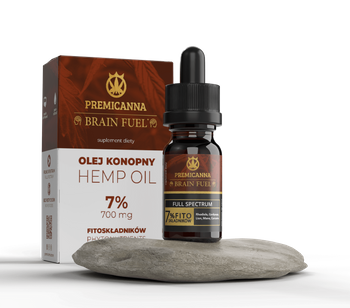Add products by adding codes
Amanita Muscaria (Fly Agaric) - Is It Edible?

The fly agaric (Amanita muscaria) is one of the most recognizable mushrooms in the world, known for its red cap with white spots. Interestingly, this mushroom may have influenced our modern image of Santa Claus – from the distinctive colors to the legends of flying reindeer and entering through the chimney. The traditions of Siberian people who consumed fly agaric during winter solstice rituals linked the mushrooms with spiritual visions and contact with the spirit world, which may have inspired the stories of flying reindeer. Gifts found under the Christmas tree, similar to fly agaric found in forests under conifer trees, and Christmas tree ornaments shaped like fly agaric, as hung by the grandmother of the film's author, point to the deep influence of this mushroom on Christmas culture. Historical evidence suggests that fly agaric was exported from present-day Lithuania to Finland during pagan times, which may explain its presence in Lapland traditions, where Santa Claus "lives." Additionally, consuming fly agaric can lead to what is known as the Alice in Wonderland syndrome, where body perception is distorted, possibly inspiring stories of entering through the chimney. All of these elements show how deeply the fly agaric has rooted itself in our culture, influencing the traditions and rituals we know today.
Fly Agaric and Santa Claus – Inspiration or Coincidence?
The fly agaric has appeared in various traditions for centuries, and its distinctive appearance and psychoactive properties may have inspired our modern vision of Santa Claus. The color scheme of the fly agaric – a red cap with white spots – resembles the traditional outfit of Santa Claus, which may not be a coincidence. Additionally, folk tales of reindeer flying after consuming fly agaric may have contributed to the legends of Santa's flying reindeer.
Siberian Traditions – Rituals and Spiritual Use of Fly Agaric
In Siberian cultures, the fly agaric played an important role in spiritual rituals. Shamans consumed the mushrooms during the winter solstice to experience visions and contact the spirit world. These experiences may have been the foundation for legends of flying reindeer, which are often associated with the figure of Santa Claus.
Alice in Wonderland Syndrome – Perceptual Effects of Fly Agaric Consumption
Consuming the fly agaric can lead to the so-called Alice in Wonderland syndrome. This is a state in which body perception is distorted – a person under the influence of toxins in the mushroom may feel either very small or very large. Such a distortion of reality may have inspired the stories of Santa Claus "shrinking" to enter through the chimney. This syndrome is a result of the effects of ibotenic acid and muscimol on the nervous system.
Fly Agaric as a Poisonous Mushroom – Is It Edible?
The fly agaric is generally considered a poisonous mushroom. Its consumption can lead to various symptoms, such as nausea, vomiting, hallucinations, and perceptual disturbances. However, there are methods that can reduce its toxicity, which raises the question of whether it can be safely consumed after proper preparation. It is important to note that consuming raw fly agaric is highly dangerous and can lead to poisoning.
Toxic Compounds in Fly Agaric: Muscarine, Ibotenic Acid, and Muscimol
Fly agaric contains several toxic compounds. Muscarine, ibotenic acid, and muscimol are the three main substances responsible for the mushroom's toxic and psychoactive effects. Muscarine acts as a parasympathomimetic, affecting acetylcholine receptors in the body, leading to overstimulation of the nervous system. Ibotenic acid and muscimol are responsible for hallucinations, euphoria, and perceptual effects, such as Alice in Wonderland syndrome.
Methods for Neutralizing Toxins – How to Prepare Fly Agaric?
There are methods to reduce the toxicity of fly agaric. One of the most common techniques is to boil the mushroom multiple times and discard the water. This process helps remove toxic substances like ibotenic acid, which are water-soluble. However, even after preparation, the risk of poisoning is not completely eliminated, and the mushroom loses its psychoactive properties. Therefore, consuming fly agaric, even after preparation, is not recommended.
Does Fly Agaric Have Medicinal Properties? Muscimol and Neurological Health
Muscimol, one of the active compounds in fly agaric, is being studied for its potential medicinal properties. Some studies suggest that it may have neuroprotective and analgesic effects and could reduce the risk of neurodegenerative diseases such as Alzheimer's disease. However, these studies are still in the experimental stage, and results have not been confirmed in humans. Therefore, consuming fly agaric for medicinal purposes is not recommended.
Does Muscarine Cross the Blood-Brain Barrier?
Muscarine, one of the main compounds in fly agaric, does not cross the blood-brain barrier. The effect of muscarine is limited to the peripheral nervous system, meaning it does not directly affect the brain, unlike other compounds present in the mushroom, such as ibotenic acid and muscimol. These substances can cross the blood-brain barrier, leading to psychoactive effects such as hallucinations, euphoria, and altered perception. Muscarine, on the other hand, affects acetylcholine receptors, causing symptoms such as increased salivation, sweating, intestinal cramps, and reduced heart rate, but it does not cause hallucinations because it does not affect the central nervous system.
Safe Alternatives to Psychoactive Mushrooms – Is It Worth the Risk?
If you are looking for natural ways to experience psychoactive effects, there are many safer alternatives than fly agaric. Other mushroom species, such as psilocybin mushrooms, are often used under controlled conditions and have a lower toxic potential. Although fly agaric is fascinating, it carries significant risks, and its effects are difficult to predict, making it less safe than other psychoactive mushrooms.
History and Myths Related to Fly Agaric in World Cultures
Fly agaric is deeply rooted in the culture of many peoples, especially in Northern Europe and Siberia. From legends of Santa Claus to stories of Norse berserkers who consumed mushrooms before battle, fly agaric has been a source of fascination and fear for centuries. While some of these stories may be exaggerated, the influence of fly agaric on the culture and traditions of many nations is undeniable.
Fly Agaric and the Risk of Heavy Metal Poisoning
Fly agaric has the ability to accumulate heavy metals such as mercury, cadmium, and lead, which further increases the risk associated with its consumption. Even if the mushroom is properly prepared, it may contain harmful substances that lead to heavy metal poisoning. Therefore, those who decide to experiment with fly agaric must be aware of the potential long-term health effects from exposure to toxins and heavy metals.
Summary – Should You Consume Fly Agaric?
Fly agaric is a fascinating mushroom that has inspired various cultures for centuries. Its distinctive appearance, psychoactive properties, and connection to holiday traditions make it an interesting topic for research. However, due to its toxicity and potential health risks, consuming fly agaric is not recommended. There are much safer alternatives if someone is seeking natural methods to support health or experience psychoactive effects.
Sources
This article was prepared based on the excellent channel: Naukowy Bełkot. We also provide selected sources mentioned in the video:
- C. Carboue et al. - Amanita muscaria: Ecology, Chemistry, Myths
- A. Wagner et al. - Amanita muscaria extract potentiates production of proinflammatory cytokines by dsRNA-activated human microglia
- M. Ordak et al. - Reasons, Form of Ingestion and Side Effects Associated with Consumption of Amanita muscaria
- S. Gibbons - Natural Product (Fungal and Herbal) Novel Psychoactive Substances
- M. Voynova et al. - Toxicological and pharmacological profile of Amanita muscaria (L.) Lam. – a new rising opportunity for biomedicine
- M. Kondeva-Burdina et al. - Effects of Amanita muscaria extract on different in vitro neurotoxicity models at sub-cellular and cellular levels
- W. Rubel et al. - A Study of Cultural Bias in Field Guide Determinations of Mushroom Edibility Using the Iconic Mushroom, Amanita muscaria, as an Example
Recommended

Premicanna PLUS Certified CBD Oil 10% CBD hemp oil fortified with CBG.

Tested CBD Brain Fuel Oil with Rhodiola, Cordyceps, Lion's Mane, Curcuma



